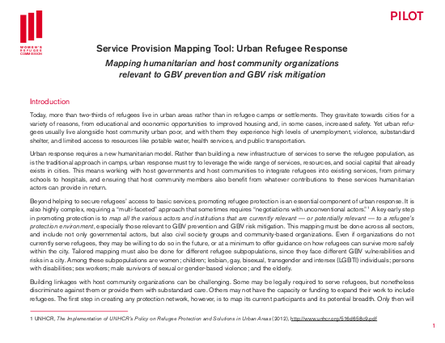
Today, more than two-thirds of refugees live in urban areas rather than in refugee camps or settlements. They gravitate towards cities for a variety of reasons, from educational and economic opportunities to improved housing and, in some cases, increased safety. Yet urban refugees usually live alongside host community urban poor, and with them they experience high levels of unemployment, violence, substandard shelter, and limited access to resources like potable water, health services, and public transportation. Urban response requires a new humanitarian model. Rather than building a new infrastructure of services to serve the refugee population, as is the traditional approach in camps, urban response must try to leverage the wide range of services, resources, and social capital that already exists in cities. This means working with host governments and host communities to integrate refugees into existing services, from primary schools to hospitals, and ensuring that host community members also benefit from whatever contributions to these services humanitarian actors can provide in return.
Links
Resource collections
- Evaluating humanitarian action
- UN Habitat - Urban Response Collection
- Urban Response - Urban Crisis Preparedness and Risk Reduction
- Urban Response Collection - Community Engagement and Social Cohesion
- Urban Response Collection - Economic Recovery
- Urban Response Collection - Environment and Climate Change
- Urban Response Collection - Housing, Land and Property
- Urban Response Collection - Urban Crisis Response, Recovery and Reconstruction
- Urban Response Collection - Urban Resilience